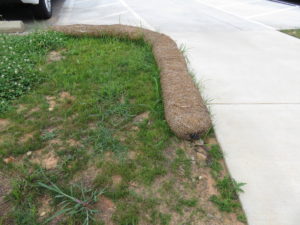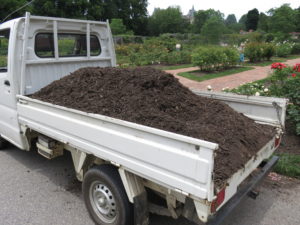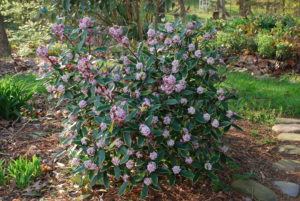Many landscape plants die because they were planted in soil that was too wet or soggy. Poorly drained soils are generally poorly aerated. A high water table in an area limits your choices of plants that you may grow. Plants that grow naturally along streams and ponds are good candidates for poorly drained sites.
During periods of heavy rainfall, water may stand on the ground surface. Consistently wet soils eventually becomes a breeding area for anaerobic soil bacteria; an odor may indicate their presence. Soils that are poorly drainage may have a dull or slate gray color.
During construction heavy equipment may compact the soil reducing air space or create a hard pan. Frequently, on construction sites, contractors may pile up topsoil and return it to plant grass seed or sod. Unfortunately, some topsoil may be remove and sold off leaving only subsoil for new homeowners.
Drainage issues may result from poor grading of land, permitting road, street, or sidewalk runoff to flow onto garden beds or lawn. Runoff water may also come from plugged eaves and downspouts.
Perform A Perk Test before planting a new garden or lawn. Dig a hole 12 inches deep and 2-3 feet wide. Fill the hole with water and time how quickly the water drains out the bottom. If water drains out slowly or stands for longer than 24 hours, your soil is poorly drained.
Alternative Perk Test… remove the top and bottom from a large 3 lb. coffee or tin can. Dig a 4-inch deep hole and as wide as the diameter of the can; insert the can into the hole and fill soil around the outside of can. Fill can with water and measure the water level after one hour. If the water level drops 2 – 5 inches, soil drainage is good. If the water level drops less than 2 inches, soil drainage is poor.
Soils with good porosity (drainage) in the top 12-18 inches are ideal for most plant species. Amend planting soil with perlite or coarse sand to improve soil drainage or opt to grow plants in containers or raised beds.




 Posted in
Posted in 
